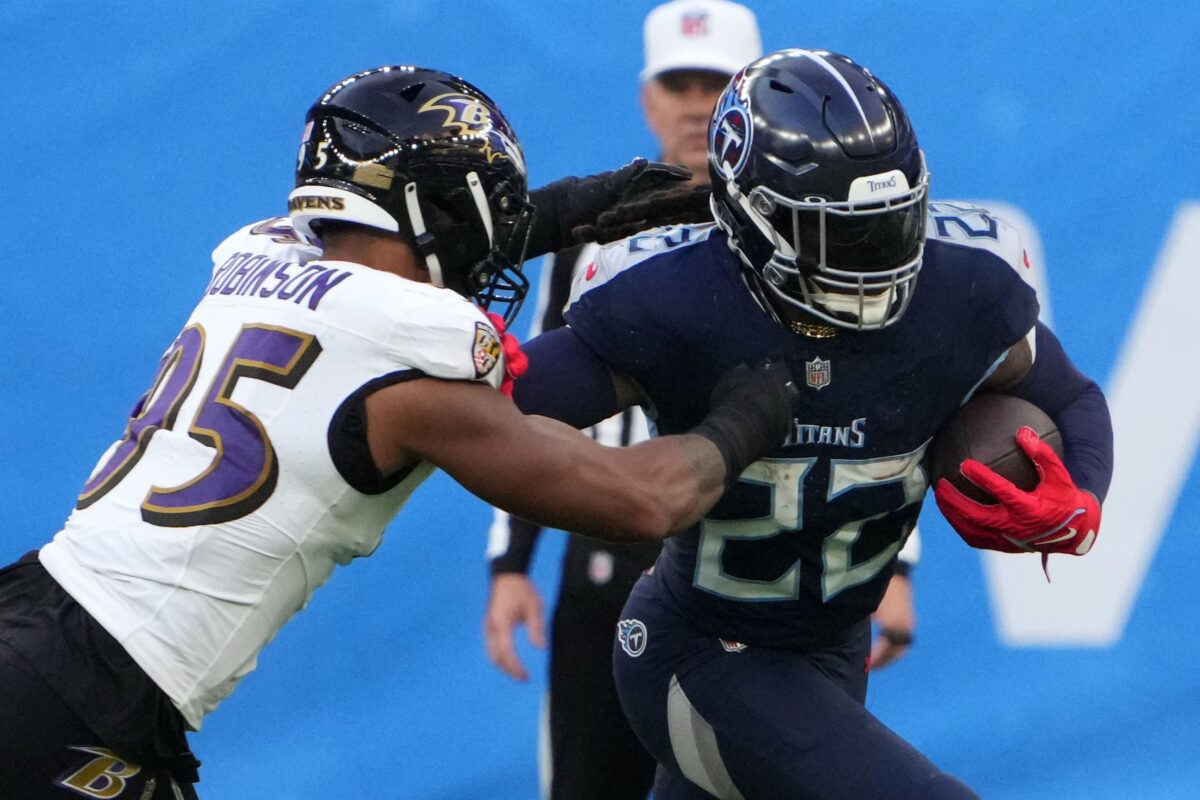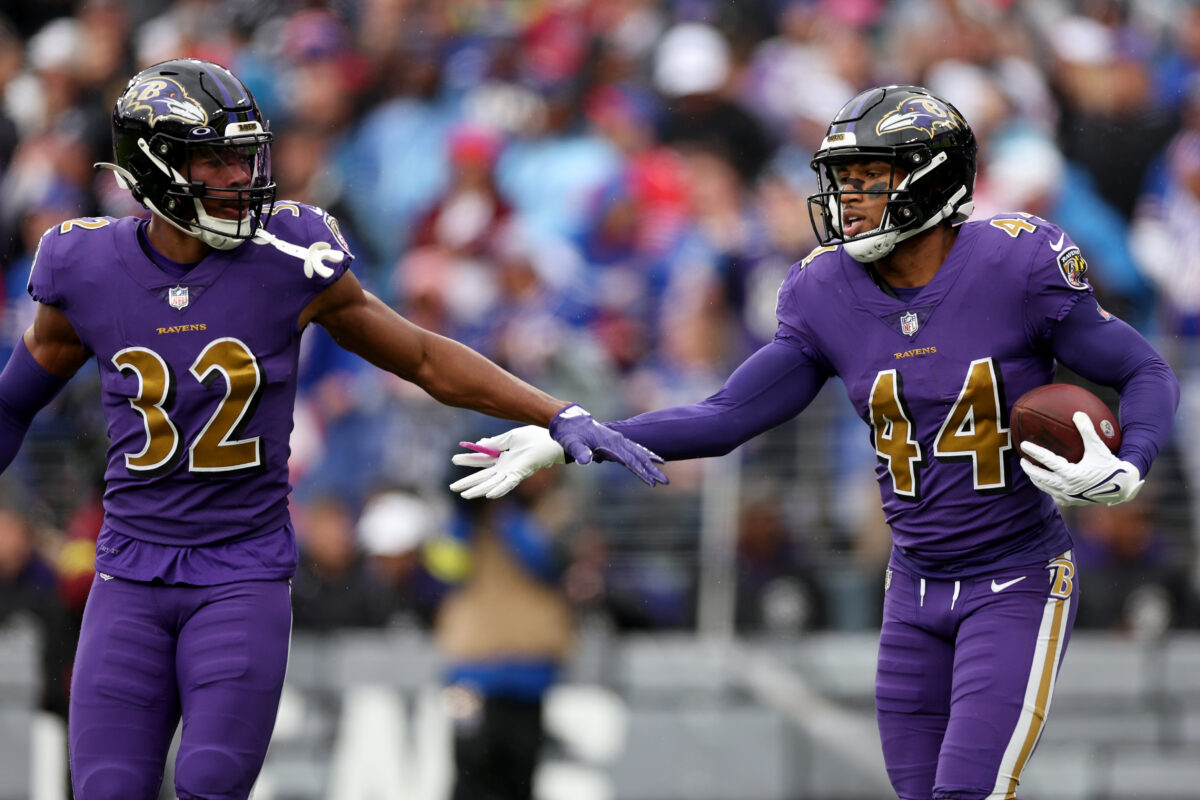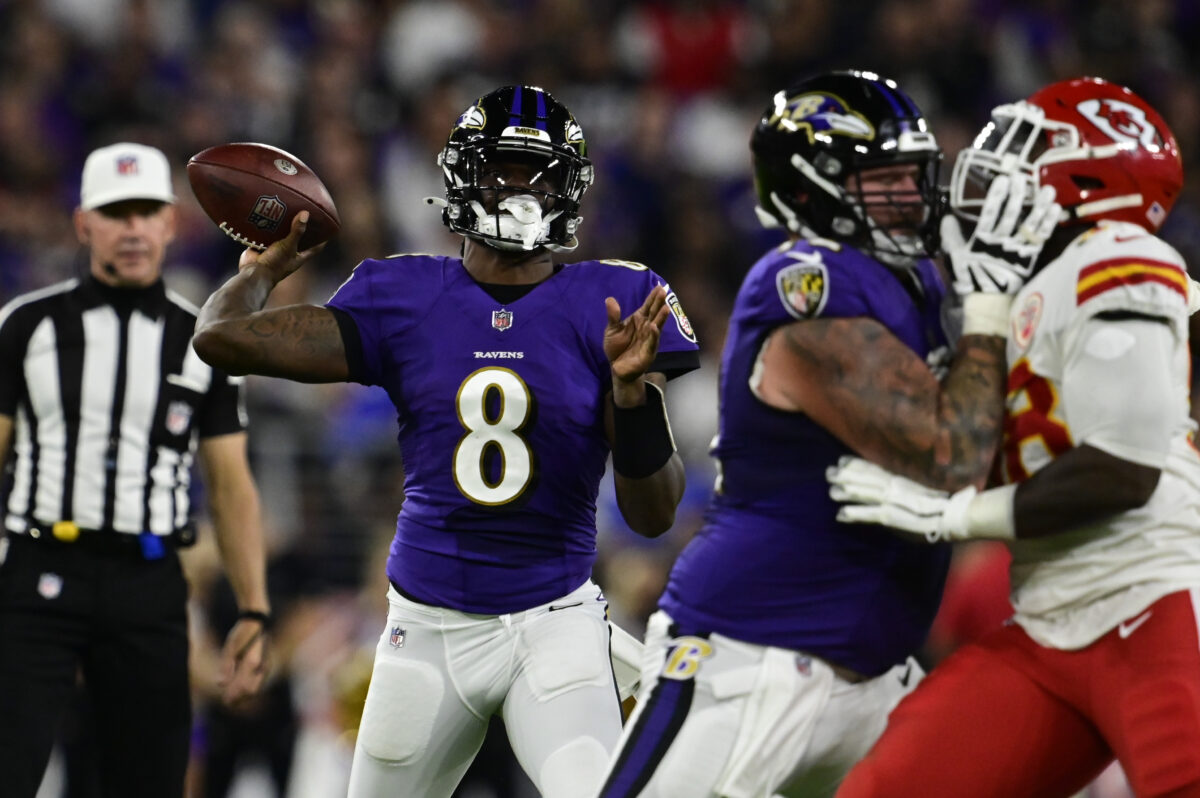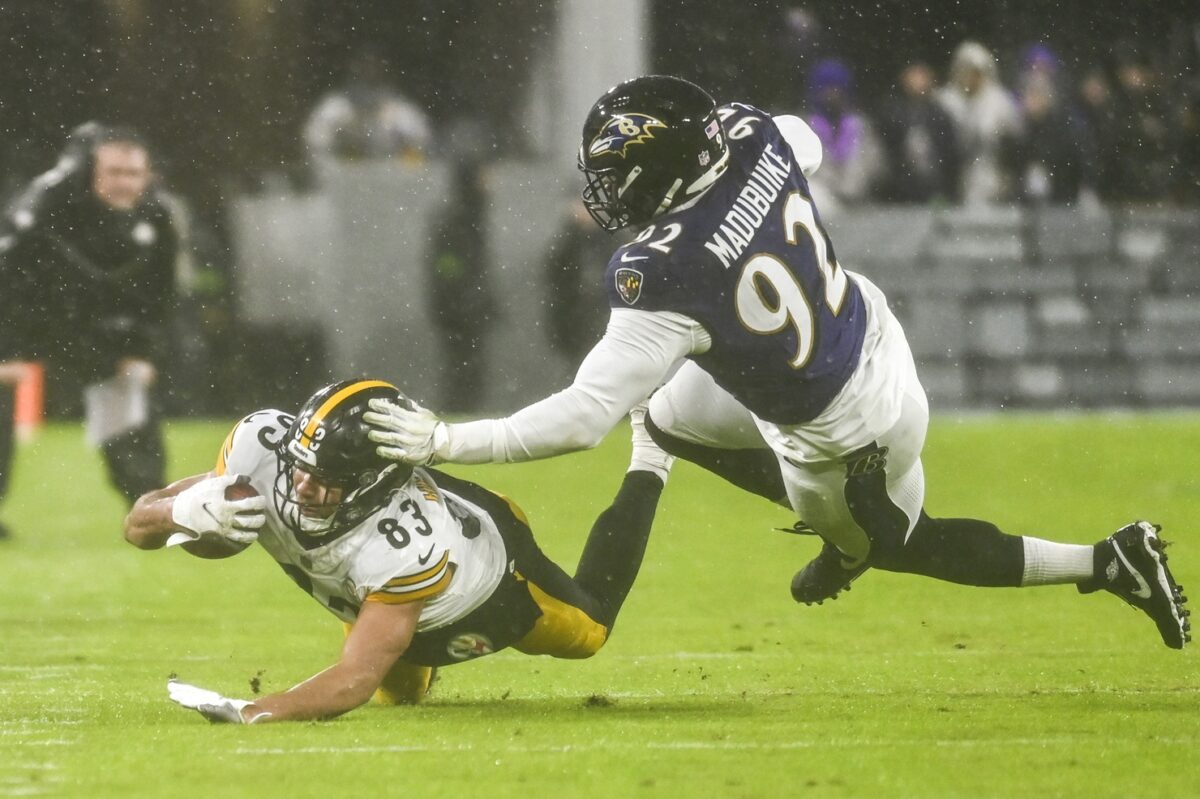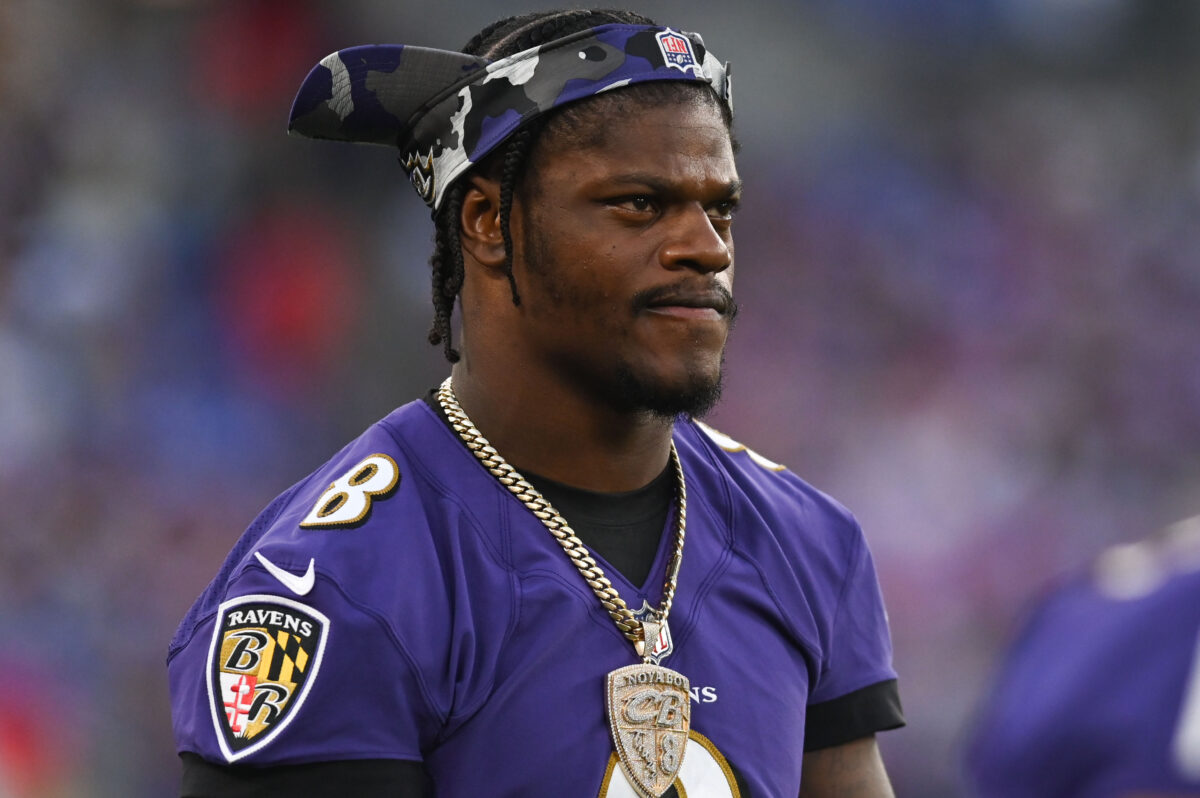It sounds like madness, but there’s a scenario in which the Ravens moving on from Lamar Jackson might just make sense.
In March, 2013, the Baltimore Ravens rewarded Joe Flacco for a 2012 postseason in which he threw 11 touchdown passes and no interceptions with a six-year, $120.6 million contract that was, at the time, the richest in NFL history. Flacco, who had never thrown more than 25 touchdown passes in a regular season before his 2012 postseason hot streak that ended with the Ravens winning Super Bowl XLVII, never threw more than 27 touchdown passes in a season after signing his massive contract. In his final four years with the Ravens, he was one of the least effective quarterbacks in the NFL.
The Ravens selected Lamar Jackson in the first round of the 2018 draft as Flacco’s successor, a process of succession that took half a season. But what if the Ravens had held off on Flacco’s deal with the potential understanding that his 2012 postseason was an outlier, and his 2013 seasons and beyond would be primarily worse than before? What if they had selected one of the quarterbacks in the 2012 draft — say, Robert Griffin III, Ryan Tannehill or Russell Wilson — and rolled Flacco’s rookie contract into another rookie contract? What if the Ravens had realized that they could only go so far with Flacco, and prepared for a future without him, adding three to four more years of inexpensive quarterback play as a roster-building advantage?
The Ravens obviously didn’t do that, but they have an opportunity now to do what NFL teams don’t usually do — they have the opportunity to be aggressive with their draft picks, and potentially select and develop their franchise quarterback’s successor without giving their current franchise quarterback a contract that will affect their roster-building potential for a number of years.
NFL.com’s Bucky Brooks recently suggested one solution to such a scenario.
Yes, it sounds nuts for the Ravens to move on from the 2019 unanimous NFL MVP, but I don’t completely disagree with Mr. Brooks. When the Rams signed Jared Goff to a four-year, $134 million contract extension in September, 2019, they did so because they were betting on Goff’s ultimate potential. Two seasons later, after Goff had (unfortunately) shown his ultimate potential, the Rams traded Goff and a ton of draft capital to the Lions for the services of Matthew Stafford. The Rams got much better at quarterback as a result, but what if they had simply moved on gradually from Goff and selected his successor as part of a roster-friendly plan? Even in the Rams’ Super Bowl season of 2018, Goff showed enough dings to make the practice of paying him as a top-tier quarterback fishy at best.
There are all kinds of examples of teams overpaying quarterbacks on second deals because they don’t want to get caught behind the eight-ball at the game’s most important position. But that doesn’t mean it’s always sound financial and team-building practice. And as great as Jackson has been in certain instances and certain ways, the Ravens are now thinking of giving a massive contract to their franchise quarterback, despite the fact that Jackson clearly regressed (or, at least, didn’t show the development you’d like) in 2020 when it came to field-reading and efficiency.
How Lamar Jackson can end his postseason curse — and become a complete quarterback
That’s not to say that Jackson isn’t capable of more, but how much more, and how much will that be worth? That’s what the Ravens have to weigh as Jackson goes into his fourth NFL season. They can exercise the fifth-year option on his contract by May 3, which they will certainly do, which pushes the necessity of that massive hypothetical deal further on down the road. Baltimore general manager Eric DeCosta has certainly debated the advantages of keeping Jackson on that second contract versus what that will do to his ability to construct a complete roster year after year.
“It’s great to have a quarterback,” DeCosta said on April 19, during the Ravens’ pre-draft press conference. “It’s great to have a quarterback who wants to win badly. He prepares to win, and he cares. He’s a part of this community. That’s a really important thing; we don’t take that for granted. We try to be as strategic as possible in the short term, but also in the long term. I think [senior vice president of football operations] Pat Moriarty and [director of football administration] Nick Matteo do an awesome job looking at the salary cap and the implications of deals that we make. We try to be responsible in the short term. We try to be aggressive as well. We’ve tried to be proactive, as I think you’ve seen in the last few years with contracts with veteran players [and] with guys that we’ve drafted and developed. We’ve tried to keep as many of those guys as possible.
“We understand that if we do sign a long-term deal with Lamar Jackson, that’s going to change the way we’ve operated the last couple of years. We certainly understand that, and we look at that as a great problem to have. We aspire to [have] that type of problem. We want to have the franchise quarterback. We want to have the quarterback that cares as much as we do, and he’s a leader, and he’s the face of the team, and he represents the team as well as he does, and he gives us a chance to win every game. So, that’s a positive. It will change the way that we do contracts, potentially. We will have to be probably a little bit more careful about which players we sign and which players we don’t sign. We may lose some good, young players. That’s unfortunately just the salary cap age that we’re in, and it happens to every single team. So, we’ll be aggressive, if possible. I think the draft will continue and will always remain the lifeblood of this organization when it comes to building this team and building the roster, and draft picks will be more important than ever.”
On Friday, the Ravens traded offensive tackle Orlando Brown to the Chiefs for Kansas City’s 2021 first-round pick (No. 31 overall), their 2021 third-round pick (No. 94), their 2021 fourth-round pick (No. 136), and a 2022 fifth-round pick to the Ravens in exchange for Brown, Baltimore’s 2021 second-round pick (No. 58 overall), and a 2022 sixth-round pick. That gives Baltimore the 27th and 31st overall picks in the 2021 draft, which would allow them to move up in the first round (perhaps with additional future draft capital thrown in) if they wanted to.
Why the Chiefs may have hit the jackpot in the Orlando Brown trade
We don’t know if they want to, and we don’t know if they’ve thought about putting Lamar Jackson on a “graduation plan,” but don’t be completely gobsmacked if it works out that way — with Jackson, or with another first-contract quarterback who isn’t an obvious bust, and may not be an obvious second-contract guy.
At some point, some NFL team is going to go Full Metal Moneyball and fold their franchise quarterback’s rookie contract into another franchise quarterback’s rookie contract, leaving the team open to the rookie quarterback pay rate, and the rookie quarterback roster flexibility. It will take a total commitment from the organization, because the blowback if the first franchise quarterback goes elsewhere and is transcendent, and the second franchise quarterback doesn’t live up to it all, would be severe. You could be talking about an entire front office and coaching staff of people losing their jobs.
But if it was to work out… well, it’s a copycat league, and the first time wouldn’t be the last. You could see a wave of quarterbacks “graduating” in ways you’ve never seen before.
